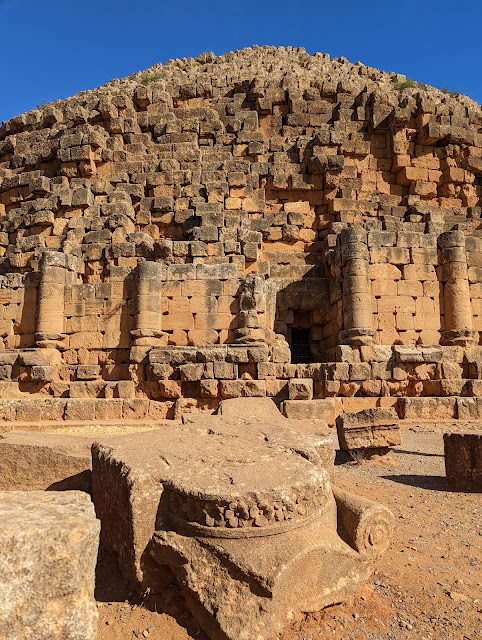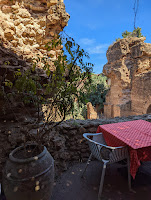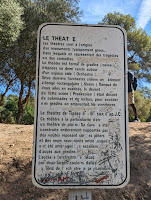This is the Royal Mausoleum of Mauretania, which is the tomb where the Numidian Berber King Juba II (son of Juba I of Numidia) and the Queen Cleopatra Selene II, sovereigns of Numidia and Mauretania Caesariensis, were allegedly buried. However, their human remains have not been found at the site, perhaps due to tomb raiding.
Tipaza is a popular day trip from Algiers for sightseeing of Roman ruins and spending some time at the beach. It's only an hour drive away in the next wilaya, province, or what I would consider a county.
Tipasa, as the city was then called, was an old Punic trading-post conquered by Ancient Rome. It was subsequently turned into a military colony by the emperor Claudius for the conquest of the kingdoms of Mauretania. Since 1982, it has been declared by UNESCO a World Heritage Site.
Royal Mausoleum of Mauretania
Tipasa Roman Ruins
It's a large site for Roman ruins and everything can be walked on and touched. It was a UNESCO site in danger, but conservation efforts took it off the list. I'm not so sure about that if there were many tourists coming through here. Algeria isn't big on tourism, so that may be what helps preserve this particular site.
chariot tracks worn into stone
tombs
Inside the Roman ruins, facing the sea and Mount Chenoua, a stele was erected in 1961 in honor of Albert Camus with this phrase in French, extracted from his work Noces à Tipasa: “I understand here what is called glory: the right to love beyond measure" (« Je comprends ici ce qu'on appelle gloire : le droit d'aimer sans mesure. »). I can see why our guide said this was Albert's favorite inspirational spot.
As if the ruins weren't big enough already, there were even more to explore on the other side of the bay.
spot the ruins resident?
fish farm
ending the day relaxing at the beach
a little sprinkle of rain led to a rainbow!
sunset on the one hour ride home


















































































































No comments:
Post a Comment